Don't wanna be here? Send us removal request.
Text
Let's Change Cancel Culture
In my Media and Society class, we had a discussion about cancel culture, and it was interesting to see different people argue different sides and have different opinions. Through researching cancel culture, a quote by Aysha Taryams has stayed with me; “So, a mistake is made, a word is spoken out of turn, a cultural norm is broken, and all is fair in the pursuit of canceling this person, erasing them off the face of the earth, banishing them to a world of shame and regret”. Her words are very accurate when describing this era of cancel culture and lean towards a negative point of view over cancel culture as a whole. This quote, and many others, brings us to a few questions. Is cancel culture a bad, cruel, and negative thing that allows people to bully strangers through a device screen? Or is cancel culture a tool we have to keep people, especially those with influence and a large platform, accountable for their actions? Is there a happy medium? We, as young adults and being main players of the social media era, have all seen cancel culture through various forms of social media and as my classmates have shown, we all have our own opinions.

Those in favor of cancel culture argue that it is a tool for accountability; it’s a way for us to use our voice against hate and social injustices and hold people accountable if they do something that insinuates hate. I agree that we should all fight for what we believe in, and I believe that people who cause immediate harm to others should be called out, but how is spreading more hate to fight against hate useful? And, are people really learning, growing, and becoming more open-minded, or are they simply keeping their opinions to themselves to simply avoid being canceled or berated on the internet? I feel that people who want to fight against hate and social injustices should spread information rather than hate. There is a certain word people are using that could be harmful to a specific community? Post something on your Instagram story to inform your followers and maybe they will take a moment out of their day to read it. There is a specific company that treats their employees poorly and supports racist organizations? Tweet about it instead of berating an influencer on their comment section because they bought a product from said company. Use the power of social media to spread accurate information and awareness, not hate.

The answer to whether cancel culture is good or bad is solely based on opinion, and before researching cancel culture, I probably would have been on the proponent side, but after researching, I now lean more against the topic. Cancel culture is taken too far over things that should hold far less power and attention that they do. I feel, most of the time, people should have the right to redemption from their past mistakes and be able to learn, grow, and move on. That being said, I do see the pros for cancel culture if is used in a more constructive way; we can make serious change if we focus our efforts on real issues, rather than if Kim Kardashian is a snake for manipulating a recording of Taylor Swift, or if Jaclyn Hill should be forever canceled because there were hairy fibers in her first makeup collection launch. If used correctly, cancel culture can be a real tool for bettering society rather than a use of bullying for self-satisfaction. There could be, and should be, a happy medium.
0 notes
Text
Day of Social Media
As technology has advanced tremendously in the 21st century, and smartphones being owned by 91% of the world, media and social media has been heavily ingrained into almost everyone’s lives. For myself, being a 22 year old who grew up in the social media era, social media is a huge part of my life. I was asked to track my media use for a day, and was curious to see the outcome. I tracked my usage on Monday, October 17th, 2022.
As soon as I woke up at 8:00, I immediately reached for my phone. I first went through my texts I received while I was sleeping, then looked at my notifications I also got through the night. I then scrolled through TikTok. This whole morning social media use lasted around 25 minutes until I had to get ready for my internship. I took this time on social media because I find it relaxing to start my mornings with my cup of coffee and watching TikTok; sort of like how my dad watches early morning news before he goes to work. It’s a way for me to prepare and relax before my busy day ahead.

After this, I really didn’t use media a lot other than my adobe programs on my laptop for my internship. I would check my phone for texts here and there but didn’t scroll through apps because I simply did not have the time. My internship ended at 1:30, and so did my media fast. As soon as I got home, I immediately started checking all my socials. I think I felt like doing this to make sure I didn’t “miss” anything. As soon as I was satisfied with looking through my Instagram, emails, Snapchat, and Facebook, I started watching T.V., and as I was watching a show, I was also scrolling through TikTok. I think this use of social media was again a form of relaxation. I just spent a significant time doing nonstop work, this was my way to decompress and chill out a bit before I had to go to work.
Today work was nannying; this job is not as busy as my internship or my serving job, sometimes even boring, which is another trigger for my social media use. I scrolled through Instagram, Snapchat, and TikTok while I waited for the kids to get out of school. I then had to do somethings around the house of the family I nanny for, so I stayed off my phone for around an hour, then again, scrolled through my social media; Instagram, Snapchat, TikTok, and Facebook, while I waited to take one of the kids to her basketball tryouts at 5:45. I felt like using media because I was bored, and needed a distraction while I waited for the time to pass. After 5:45, I was driving around, dropping off and picking up the kids from different activities, so I wasn’t on my phone. I dropped them off at home at 7:30, went home, then was back to it. I scrolled again through the usual apps for around twenty minutes before doing things such as showering, making myself dinner, and working on homework, but during these tasks (besides maybe showering), I would pick up my phone here and there. The 20 minutes as I got home was again for relaxation and decompressing, but the usage during tasks felt mainly out of habit. I also had some shows on during these tasks as a bit of entertainment and background noise. After I completed my nightly routine, I laid in bed and scrolled for about 40 minutes before I put my phone on the charger and went to bed.

Looking back at my media usage this day, I was somewhat pleasantly surprised. Although I by no means abstained from media, I feel my screen time was slightly under average. Most of my screen time was for the purpose of relaxing or out of boredom, some out of habit. As a person who likes to “stay connected”, especially with my peers, there is no escaping social media, nor do I want to, but I do think I could continue to be aware of my usage and not spend too much time out of my day looking at a screen.
0 notes
Text
The Birth of a Nation: Cinematography Landmark, but at what Cost?
The first motion picture ever recorded took place in 1878, when Eadweard Muybridge sought to answer a popularly debated question on whether all four of a horse's feet were off the ground as they were running. Not only was Muybridge able to answer yes to this question by using multiple cameras and assembling the individual pictures into a single motion picture, he also birthed the creation of motion photography.

After this groundbreaking and historical discovery, motion pictures and film became all the rage. The inventions of the projector, motion picture cameras, and the Kinetograph followed soon after. Then came the creations of everyday motion pictures, cinemas, and silent films, starting with Roundhay Garden Scene in 1888, that followed actual story lines; the film industry was finally born.
D.W. Griffith sought to reach even farther with motion pictures with his film, The Birth of a Nation. He had the largest film budget at the time, $110,000, and the film was also the longest production at the time, running almost three hours. Despite the film being complex, Griffith kept most of the script in his head and the completed film contained 1,544 separate shots at a time, which was also ground breaking when comparing it to the most elaborate films at the time containing less than 100. They also used new and innovative techniques like special effects, deep-focus photography, jump cuts, and facial close-ups. The film was truly groundbreaking and spectacular, which it would still be known for today if it wasn’t for the content within the film, which far overshadows its cinematic accomplishments.
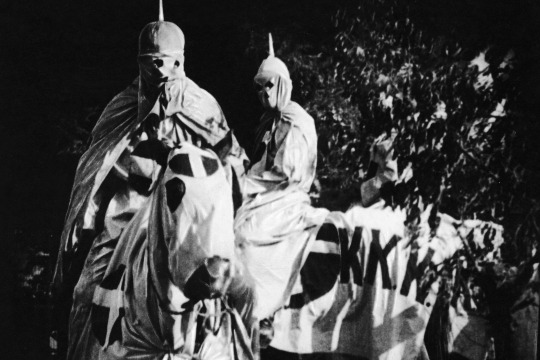
The film was about the two families, one from the North and one from the South, during the Civil War and the reconstruction period post war, and was painted in blatant racism. It was based on the book The Clansman, written by Thomas Dixon in 1905. The film depicts black people of the time as dangerous animals. They used white actors and painted them black to play these “primal” African American characters, and created terrible stereotypes with these characters; black people leering at white women eating bananas and fried chicken, raping white women, and commiting other violent crimes. In the film, the KKK were the white saviors that did the “right” thing by lynching the “rapist” black men, and that giving black people rights was a terrible thing to do. because they were the root of all problems in the United States.
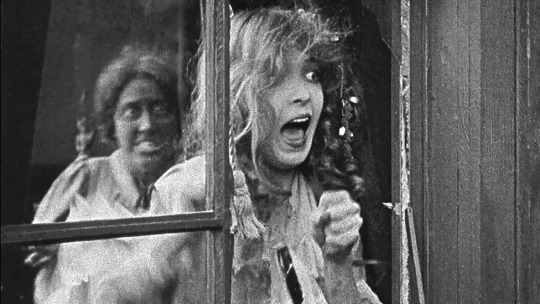
Despite the bigotry displayed in the film, The Birth of a Nation was the first blockbuster ever. It achieved national distribution and was watched by nearly three million people, despite protesting and activist organizations getting the showing of the film stopped in multiple states and towns. Before the film, the KKK was a dying organization, but after the film the KKK began a new era, riding the buzz of the positivity toward the Clansman depicted in the film. This film caused the nation’s fight against bigotry and inequality to go two steps back. The question we must ask ourselves is; why do minority groups get the short stick in order for our nation to make scientific, technological, and economical advances?
0 notes
Text
Let's Be Real
Magazines, a significant topic discussed in my Media and Society class, have been one of the main sources for news and media since the late 1700’s. The purpose of magazines can range from literature articles, to shopping catalogs, to tabloids, to home renovation inspiration; magazines have truly been a great source of media for a long time, but one problem has become prevalent with magazine companies; photoshopping. Although the media has been manipulating photos, especially photographs of women’s bodies, since the 1930’s, these photo manipulations have become a real issue in our society ever since Adobe Photoshop was released in the 1990’s.
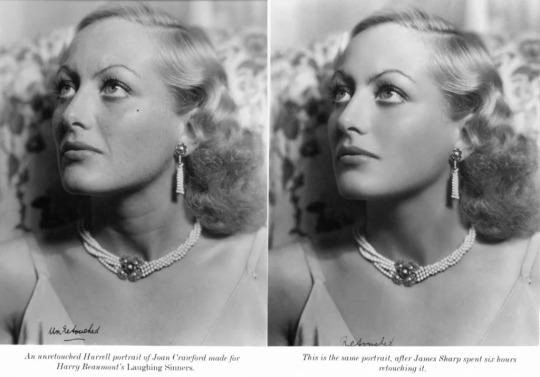
Photoshopping images in magazines has gone past the point of blurring out a model’s zit and maybe whitening their teeth a shade or two; these editors are completely changing models' faces and bodies to a point that is almost unbelievable to create an appeal and aesthetic they feel will sell better to consumers, and this is extremely problematic. Photoshopping has created a completely unnatural and unrealistic standard of beauty in our world; and although the effects of photoshop has a hold on almost everyone, the biggest worries lie on our youth.

The average teenager and adult understands that most images they see in magazines are manipulated to a certain degree but, from personal experience, this knowledge is not a conscious thought when we are flipping through images. We are constantly seeing women with glass-like skin, size zero bodies, beautiful hair, and perfect smiles. Photoshopped or not, we are still comparing, we are still envious, we still feel inferior. If I, an adult fully aware of photo manipulation, am still buying into this unrealistic expectation, what is it doing to the youth in our society? In an article on Scienceblog.com, a study shows that ⅔ parents say that their child is dissatisfied with their appearance. Children are looking at the media, at magazines, picking up on society's beauty standards, and are realizing that they do not fit into these unrealistic expectations. These body-image issues can negatively and significantly affect their mental health, their relationship with themselves and their peers, and their self-worth. It can cause unhealthy relationships with food and exercise, cause substance abuse issues, and lead to unnecessary and dangerous cosmetic surgeries.
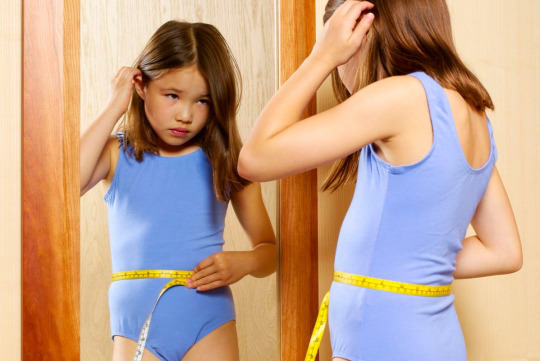
The question now is, how should our society become proactive against this? Thankfully, there has been a huge shift in calling out photoshopping, unrealistic beauty standards, and a big movement towards body positivity. Brands are making a point to be more inclusive in their ads in magazines, as well as in their campaigns, social medias, and websites; brands who are yet to implement this are being called out on their lack of diversity and lack of inclusion. We need to continue this trend; it shouldn’t be groundbreaking news that a cover of Life & Style released a cover of Kim Kardashian completely unedited; it should be the new norm. Kids should not be looking at media and making the conclusion that they are not enough. Our society needs to continue to celebrate all skin colors, all facial features, all bodies, all genders, and all people. Our differences are what makes us beautiful.
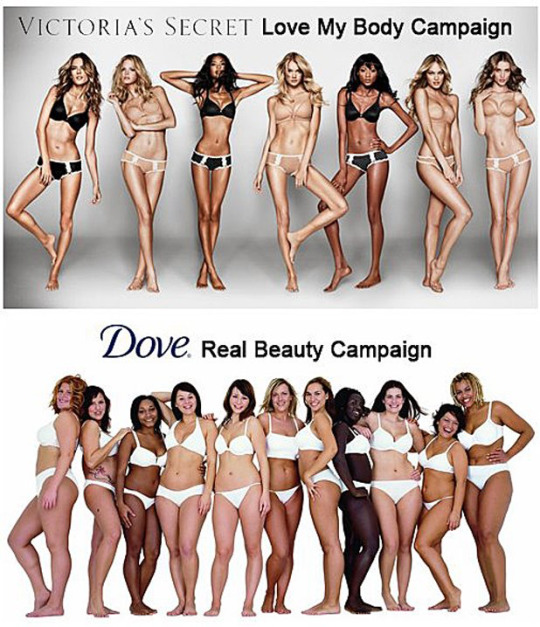
0 notes
Text
HBO Max merges with Discovery+: Flip or Flop?
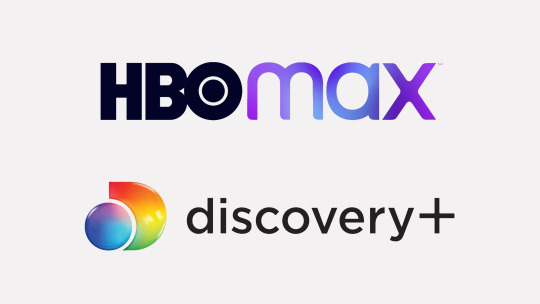
Almost everyone in the world uses media, but not everyone truly knows or understands what these media companies entail and who owns the apps you use on your phone, the channels you stream on your television, or the music you listen to on the way to work.
If you’re an HBO max user like me, or are a Discovery+ user, your favorite shows could be endangered due to one of these important media terms: convergence. If you haven’t heard already, Warner Bros., who owns both HBO Max and Discovery+, has decided to combine the two streaming platforms into one unified platform. Why are they doing this and why are some series being pulled? The answer is marketing and money.
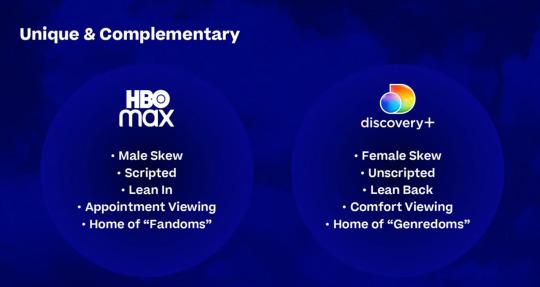
WarnerMedia/Discovery want to create a new unified platform that will launch mid-2023 that will be their top consumers one-stop-shop; a platform that has all their most watched and most popular channels and series. Because of this, they want to focus their efforts on these buzzworth series and eliminate the rest; the rest including their least popular genre and viewers: kids and family oriented content. They are, or have already, getting rid of shows like Select Sesame Street Specials, Yabba Dabba Dinosaurs, and Elliott From Earth. They are focused on adult catered content; HBO caters to more male viewers and Discovery+, more female viewers, which hits both genders of their adult focused demographic.
Not only are they steering away from kid-catered shows, but they are also dropping many series, mainly reality tv, and movies with low viewer traffic, even series created by HBO Max itself. According to an executive, they want to use the complaints about streaming competitor, Netflix, to their advantage and not clutter the platform with options people don’t actually want to watch.
Marketing this “new, great platform” aside, WarnerMedia expects to make a lot more money from the merger. By cutting shows, they will be saving tens of millions of dollars. By cutting the shows they’ve created, they see the effects of the savings immediately. They also are selling shows to other networks, therefore decluttering and adding revenue. HBO Max has also laid off about 14% of their company in preparation for the Discovery+ combination. Warner Bros. have promised an extra three billion dollars from this merger.
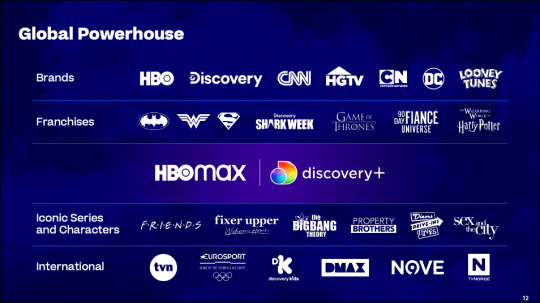
There are both positives and negatives to this convergence. If you enjoy both HBO Max shows and Discovery+ shows, this platform combination could save you time and money. You could watch the latest episode of Euphoria then finish the night with some Flip or Flop without having to pay and switch through both different streaming services or cable. But, if you have children and enjoy family show-binging nights, maybe you are less excited about this new combination. Subscription prices could also increase due to the new implementation of Discovery+ content. As consumers, we get used to the way our media works and we usually are not too excited when media companies change things up on us. We see the backlash when social media platforms change their branding or their features, or even when our favorite shows change up storylines and actors. But, atlast, we get used to the change and sometimes like the changes better than before. We will see next summer if this new HBO Max/Discovery+ platform will be a Flip or Flop.
1 note
·
View note